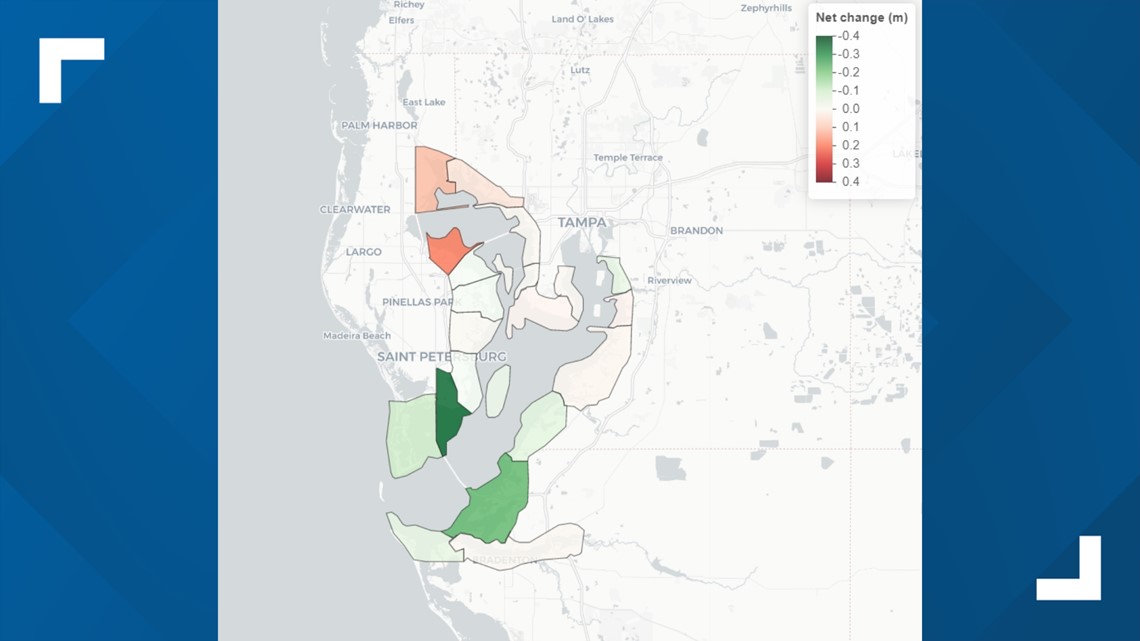TAMPA, Fla. — It's International Manatee Day! Florida is home to one of the biggest manatee populations in the world, but the future of these gentle giants commonly referred to as “sea cows” is in jeopardy.
"I really want people to take the term endangered into perspective," Jamal Galves, known as the "Manatee Man," said. "It literally means in danger means that these animals are fighting a fight that they won't be able to fight on their own. Unfortunately, that fight is brought on by humans, manatees in Florida are in even more danger than they ever have been in a lifetime."
Galves is a research coordinator for the Clearwater Marine Aquarium in Belize.
A major part of the issue is that seagrass, the food the marine animal relies on to live, is diminishing at alarming rates across Florida. In the Bay area, it’s the same story.
"Unfortunately, seagrasses in Tampa Bay are on a bit of a downward slide," Assistant Director for the Tampa Bay Estuary Program Maya Burke said. "We had accomplished a great goal by recovering the bay to more than 42,000 acres of seagrass back in 2016, but unfortunately, in 2018 and 2020, we saw losses of seagrass."
More than 6,000 acres of seagrass across Tampa Bay has been wiped out; 4,041 acres disappeared in Old Tampa Bay alone. It’s a statewide problem and a huge threat to manatee survival.


"Even if you don't know it, you ought to care about seagrasses, because if there's a way that you have fun, it's probably somehow connected to seagrasses," Burke said.
Starvation has been one of the manatee’s biggest silent killers, so far 683 manatees have died across the state, which is significantly less than this time last year, but there’s still more work to be done.
“We need every Floridian, every visitor, every human across the globe to talk about this, to tell their story, to support the initiative, to show up, to volunteer, to be a part of making a difference, ensuring that Florida manatees don't eventually go extinct," Galves said.
It’s not all bad news however, mortality rates are down year-over-year and there are renewed efforts to bring depleted seagrass back.
"We've actually been working on a couple of projects to look at the potential for restoring oysters to help mitigate the effects of that harmful algae bloom that keeps occurring in the summertime," Burke said. "So we think that oysters can help eat and filter some of the cells that are contributing to the seagrass losses in that area."
That's not the only initiative. The Tampa Bay Estuary Program also secured a grant to allocate more resources to tackle the problem.
"We're really excited about that grant because it allows scientists and researchers to work directly with elected officials and decision-makers to figure out what are the questions they have for the types of actions that they might take to protect seagrass meadows and water quality," Burke said. "In old Tampa Bay and what are the research questions that they would need answered in order to make those investments of our public dollars and those kinds of things."
Experts say the community needs to do its part to make sure manatees can survive for generations to come.
"The time sitting at home saying that somebody's going to do something about it is over," Galves urged. "It's not a spectator sport anymore, you have to be that someone."
Law enforcement also wants to remind people not to harass manatees. There have been several incidents in our area of beach-goers bothering groups while they’re mating. Remember, manatees are protected by state and federal law so it is illegal to touch or even feed them.

